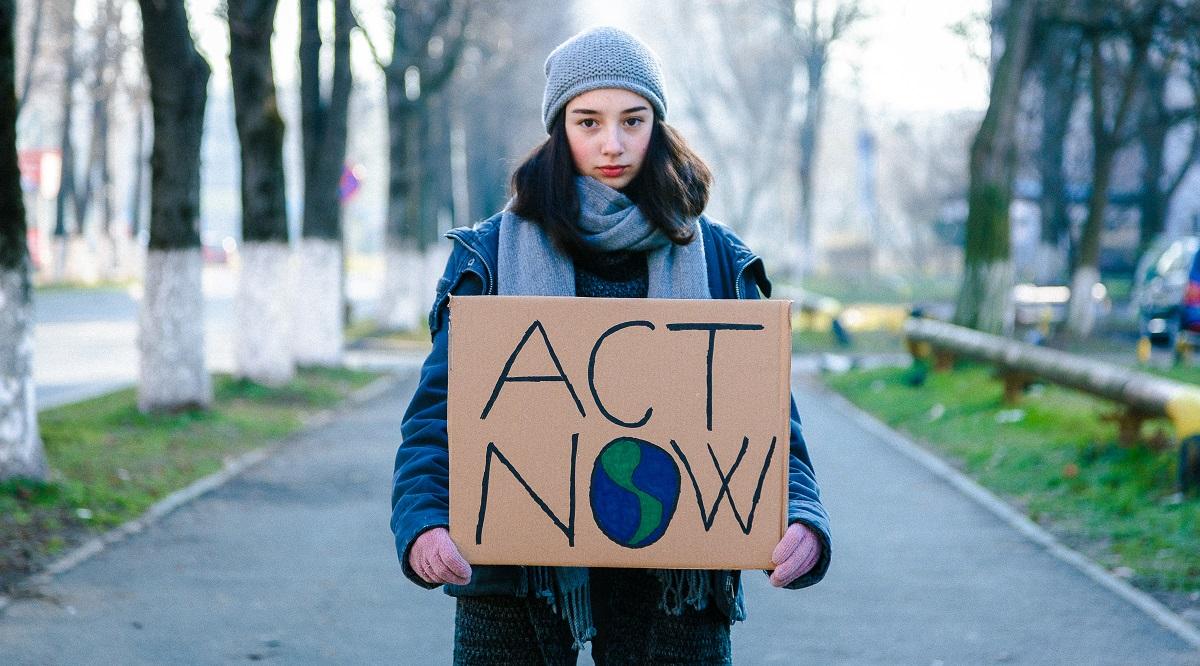Editor’s note: The opinions expressed by the authors do not necessarily reflect the opinions of the AAMC or its members.
In the summer of 2023, Joe Vipond, MD, a Canadian emergency medicine physician, found himself increasingly distressed. The climate crisis was in full force — wildfires were raging across Canada, blanketing the skies with smoky pollution — and environmental hazards seemed to be mounting while climate-action efforts were not.
So, like many others seeking an outlet for their discontent, Vipond turned to the social media platform X. “I am so sad about the world and where it is going,” he wrote. “I tried so hard. It was never enough. Please forgive me, children, animals, plants, ecosystems. This is all so tragic.”
That poignant tweet would go on to garner thousands of likes and numerous comments. Vipond later penned a reflection expanding on his emotions around climate change, noting, “I feel anxiety: for the threat that befalls us over which we as individuals have very little control. I feel terrified: for the very real prospect of my life, and/or my children’s lives, being curtailed by calamity.”
Vipond’s words and the response to them were no surprise to those of us who study the connection between climate change and mental health. At CIRCLE, a research and action initiative in the department of psychiatry at the school where we work, we have seen the powerful impact that climate catastrophes — increasingly ferocious heat waves, deadly superstorms, and record-breaking fire seasons — can have on a person’s well-being.
Youth often feel angry about the threat that ecological degradation poses to their prospects of building secure homes and livelihoods. Many expectant parents lie awake at night, worrying about questions like whether their children will have clean air to breathe. Some people grievingly ask if it's even morally sound to bring children into a world ravaged by climate change.
All of these deeply distressing feelings, commonly couched under the umbrella term “climate anxiety,” are becoming a pressing problem. In a seminal 2021 survey of 10,000 16- to 25-year-olds from 10 nations, nearly 60% indicated that the climate crisis had left them “very worried” or “extremely worried.” More than half reported feeling that “humanity is doomed.” And nearly half said these troubling sentiments impacted their daily functioning.
One might be tempted to dismiss climate anxiety as a justifiable, almost expected, outcome of living in what United Nations Secretary-General António Guterres strikingly called “an era of global boiling.” When such an existential threat looms, distress emerges as a psychological reflex, much like our prehistoric ancestors’ survival responses in the face of rampant physical dangers.
But we cannot afford to minimize such responses when they impair functioning or cause ongoing dismay, especially given news reports that a growing number of people are seeking help for climate anxiety. Young people and people with mental health conditions as well as those in communities of color — which often face the brunt of climate impacts — are especially vulnerable.
Given the growing distress, current and future physicians have an ethical obligation to expand their knowledge of climate anxiety and how best to help patients struggling with it.
Helping patients in need
Complex emotions about climate change can manifest in varied ways.
A meteorologist may become mired in grief when their work reveals all that the planet stands to lose. For example, as Hurricane Milton barreled toward Florida, TV meteorologist John Morales came to the brink of tears while reporting. “I apologize. This is just horrific,” he said.
A university student pursuing environmental science may feel hopeless at the seeming futility of their studies. Jazmín Romero, a student at the University of California, Irvine, recently described feeling discouraged by environmental research, saying that “it feels like we’re just testing [for no reason because] we already know what the problem is: We need to stop burning fossil fuels.”
Climate anxiety can exacerbate an eating disorder, as happened to one young woman who felt compelled to try to help address the environmental crisis by eliminating all carbon-intensive foods from her diet, as described in a recent paper in the Journal of Eating Disorders.
No matter how climate anxiety manifests, health care providers — whether primary care providers or therapists — need to help patients feel welcome to articulate their climate-related experiences without judgment, and feel empowered to cocreate a plan for coping with these feelings.
There are several effective options for building a plan for addressing climate anxiety.
Paramount is committing to climate action with others. Collective behaviors help decrease the cognitive and emotional burden of climate anxiety, a mixed-methods study of 18- to 35-year-old Americans found. In essence, pooling efforts to address climate change helps combat a sense of hopelessness. One such option is All We Can Save Circles, which convene people to read the eponymous book that outlines climate actions while also exploring difficult climate-related emotions.
Empathetic sharing on its own can be a restorative force. One venue for such conversations is climate cafés — supportive virtual or in-person forums for unpacking climate emotions. Though not therapy, these sessions are sometimes run by therapists who have received specific training about climate anxiety, such as this session cohosted by the University of California, San Francisco, Department of Psychiatry and Behavioral Sciences. The Climate Psychology Alliance offers numerous training opportunities, including on how to facilitate climate cafés.
Other gathering options come with various themes and formats. Good Grief Network provides a 10-step, facilitated peer-support program conducted in 10-week sessions. Conceivable Future brings together people whose climate anxiety primarily centers on whether to have children. The website Unthinkable.earth offers a range of resources, including events, educational materials, and a directory of therapists who focus on climate-related issues.
Training the next generation
It’s not enough to make only today’s physicians aware of these tools. As climate change amplifies extreme weather patterns, future physicians may be increasingly tasked with advising patients on how to safeguard their mental well-being.
In this spirit, several U.S. medical schools have already embarked on curricular innovations focused on climate awareness. Duke University School of Medicine’s mandatory Foundations of Patient Care course covers the links between climate change and mental health alongside clinical skills, biomedical sciences, and other core content. This seamless integration reinforces climate anxiety as a valid clinical concern, akin to abdominal pain or headaches, and can help prime future providers to identify it early on.
Other strategies for climate-anxiety education include offering institution-wide seminars that bring together medical students and enrollees from various fields for transdisciplinary learning. At Stanford University, courses such as The Impact of Climate Change on Human Health and Confronting Emotions in the Climate Sciences provide scientific, policy, and health information alongside opportunities to share personal concerns and develop tools to cope with those feelings, both individually and in group settings.
It has been argued that educators who teach about climate change should enrich students’ learning experience by acknowledging possibly intense responses to it. Given that similar emotions can arise in the context of learning about the health impacts of climate change, this approach is increasingly relevant for future physicians as well.
Other educational innovations involve preparing medical residents and fellows. A partnership between the Stanford Center for Innovation in Global Health and the University of Washington has developed a collection of didactic case studies, including one titled Climate Distress & Ecoanxiety, that is tailored for clinical trainees. These case studies cover comprehensive learning objectives and clinical competencies such as the ability to differentiate the normal range of emotional responses to our changing environment from clinically significant presentations. Available to download for free, these materials can easily be adapted by training programs across the country.
A challenge and an opportunity
Vipond’s post about his personal climate emotions was a powerful conversation starter among health professionals. Now, the medical community must play a central role in carrying the momentum forward.
Part of the work involves keeping this issue visible, since it’s painful and it’s sometimes easier to avoid confronting head-on. As Vipond observed, “What if part of our inability to deal with the underpinnings of the climate crisis has to do with our refusal to acknowledge the emotions of what we are feeling? In our society, we must pretend that all is well, don’t look at that scary stuff over there, let’s go for brunch. Don’t look up.”
The phenomenon of climate anxiety can indeed seem scary. But it also unveils a meaningful opportunity for us to be our most lively, connected, and resilient selves, embracing the true depth of our feelings and engaging others to do the same.
In this era of escalating threats to public health from the climate crisis, the medical community has an unparalleled chance to use its trusted voice for powerful change. Let’s make sure we do so.


